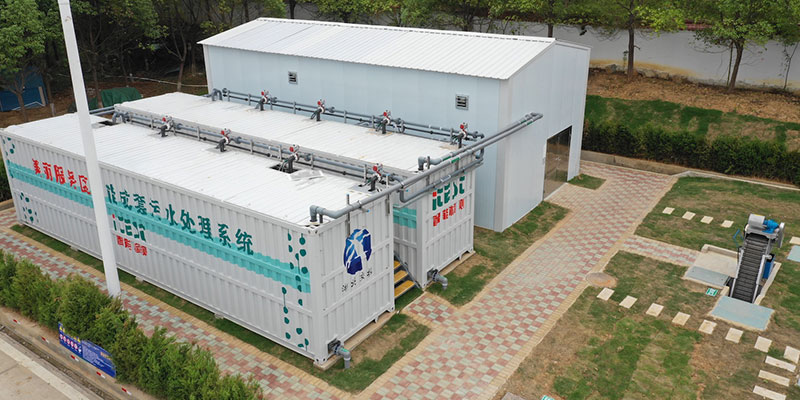
Aspiral™ wastewater treatment at service areas along China’s Hubei highway system allows effluent to be returned safely to the environment or used locally for agricultural irrigation
In a country facing freshwater shortages, China’s five-year plan’s priorities promise further expansion of wastewater reuse
In recent decades, China has considerably expanded water reuse as a sustainable way to slash use of fresh water, reduce discharge of nutrients, shrink carbon footprints, and implement a circular economy. With a tough regulatory framework and the increasing importance of water reuse in China’s five year plans (FYPs), momentum is growing and there’s no sign of a slowdown.
Between 1981 and 1985, China commissioned pilot projects in Qingdao and Dalian that established the viability of water reuse. In response to the national water-pollution control policy between 1985 and 2000, water reuse projects in Xi’an and Tianjin then led to considerable technological advances.
Adoption exploded in 2000 with more stringent regulatory enforcement coupled with increased funding. In northern Chinese cities, where water use is heavy, a higher percentage of wastewater has been treated for reuse, solidifying the process as a long-term national strategy. Reuse development has continued steadily since 2010 at local and regional levels.
In 2019, total municipal water reuse volume in China rose to 12.62 billion m3, with 80% used for ecological, environmental, and industrial applications. The remaining effluent went toward agricultural irrigation and various nonpotable urban applications.
Decentralized and Urban Water Reuse
Although China continues to favor centralization, the ambitious mandates and pressing deadlines of recent five-year plans have created an openness to decentralized reuse in some building projects and rural areas.
For instance, Fluence and local partner ITEST struck a cluster agreement to install and commission modular Aspiral™ wastewater treatment plants at service areas along Hubei’s highway system.
Because the service areas are 50 km apart, connection to a grid was impractical, so it made sense to use a decentralized approach of placing small plants at the point of use. Because Aspiral™ effluent meets China’s Class 1A standards for reuse, it can be returned safely to the environment or used locally for agricultural irrigation.
While the rate of urban water reuse is 19.9%, 65.7 billion m3 of sewage was discharged in urban areas in 2019, approximately 96.3% of which was treated. Because China’s current 2021-2025 five-year-plan emphasizes new plant construction and promotion of reuse at 15 million m3 daily or higher, there is still much opportunity for expansion.
Governmental Support for Water Reuse
Because reuse projects have relatively low profits due to high initial investment and lack of customers, governmental investment is vital. In 2019, China’s annual investment in urban wastewater treatment and reclamation fixed assets climbed to $16.28 billion.
With reuse a priority, the government has initiated design codes for water reuse, safety and efficiency advances, and a regulatory framework that includes exacting national water quality standards for different applications.
These high quality standards are driving technological development. While activated sludge was a common secondary treatment process, concerns over eutrophication have led to wide adoption of processes including membrane bioreactors, membrane filtration, and disinfection.
One of the most attractive new technologies deployed in China is membrane aearated biofilm reactor (MABR), which uses simultaneous nitrification-denitrification for excellent nutrient removal and achieves high energy efficiency through passive aeration. It’s the technology at the core of the Aspiral™ modular units used successfully in the Hubei highway project.
The Future of Water Reuse in China
Moving forward, China plans to energetically pursue wastewater reuse for domestic, industrial, ecological, and agricultural use. China is now targetting water reuse rates of more than 25% by 2025 in cities experiencing water-supply problems, more than 35% of which are in the Beijing-Tianjin-Hebei region.
With our Aspiral™ manufacturing facility in Jiangsu, Fluence is positioned to quickly deliver China Class 1A effluent for reuse anywhere in China, even in remote areas like Taiping village, where we delivered and installed a 300 m³/d Aspiral™ MABR-based plant in only 10 days. Fluence is a global company with plants in over 70 countries. Contact our experts to discuss the benefits a new stream of high-quality effluent can bring to your service area.
